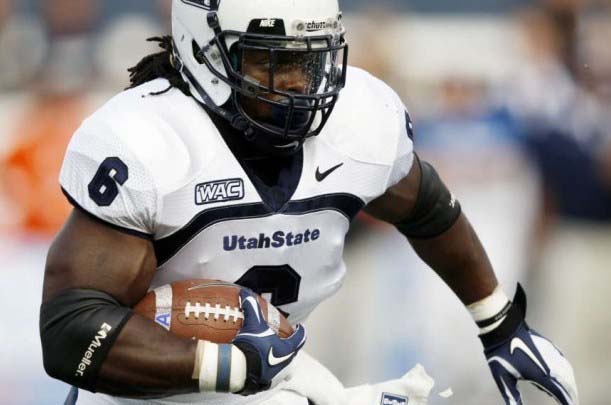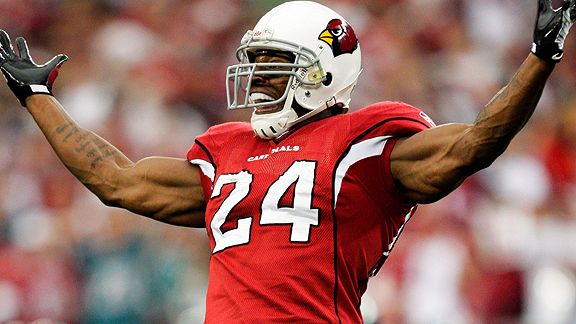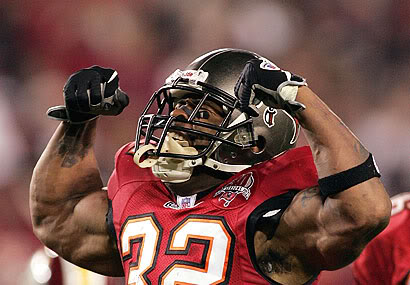In one of my previous articles, The Maximal Effort Method: Building Stronger Athletes, I discussed an important method we use to get our athletes super strong. Strength is the backbone to our program as it is essential when it comes to developing all other athletic qualities such as speed, quickness, agility, and power.
In this article, I will review another method that we use, the Dynamic Effort Method, to develop a more powerful and explosive athlete.
We will review:
- What the Dynamic Effort Method is
- Why it works
- How we employ it to get maximum results

Related: How to Increase Power for Athletes
WHAT IS THE DYNAMIC EFFORT METHOD?
I first learned about the Dynamic Effort (DE) Method while reading work done by powerlifting coach Louie Simmons. The DE Method was used by him and his powerlifters to train the body to be explosive and powerful. They accomplished this by lifting with medium weight for MAX ACCELERATION. They primarily used this method with the bench press, deadlift, and squat.
The idea was to develop a maximal strength base using the Max Effort Method and then train the body to be able to recruit that strength more quickly with the Dynamic Effort Method. As you can see, both of these methods work together beautifully to develop a STRONG and POWERFUL athlete.
While Louie and his team used the DE Method with the 3 big lifts – squat, deadlift, bench press – we incorporate a wider variety of movements with our athletes. Louie’s sport only consisted of the three powerlifting lifts (bench, squat, deadlift), so they only had to focus on improving those three lifts.
When working with athletes, it is important to incorporate and train a variety of movements so that it has a greater carry-over to the field. We want to equip our athletes with the tools to be athletic in a variety of planes and directions since that is how they operate in their sport (with the expectation of track, which only competes in a linear fashion, and of course, powerlifting, which only competes in the bench, deadlift, and squat).
WHY DYNAMIC EFFORT TRAINING WORKS (THE SCIENCE BEHIND IT)
In The Maximal Effort Method: Building Stronger Athletes, I talked about why athletes need to lift heavy weights in order to get strong. Now I’m telling you that athletes need to lift with medium-lighter weights?? You might be wondering what the heck is going on here.
Let me explain….
As I discussed above, we have our athletes lift heavy weights for lower reps (ME Method) to develop a maximal strength base. Getting strong is all great, but in athletics, we need to be able to recruit that strength as quickly as possible as speed kills – enter the DE Method.
With the DE Method, we teach the body how to recruit our strength as quickly as possible. This is done by training the nervous system to recruit muscle fibers more rapidly – more specifically, we are seeing an increase in Type II muscle fiber recruitment as well as an increase in total motor unit recruitment.
Ultimately, the goal of the DE Method is to improve the athlete’s “Usable Strength” or the amount of strength an athlete can express in a specific time frame – see my article Why Stronger Athletes Make Better Athletes for a more thorough explanation of “Usable Strength”.
At the end of the day, when an athlete can recruit their strength more quickly, they improve their “Usable Strength” leading to a faster and more explosive athlete.
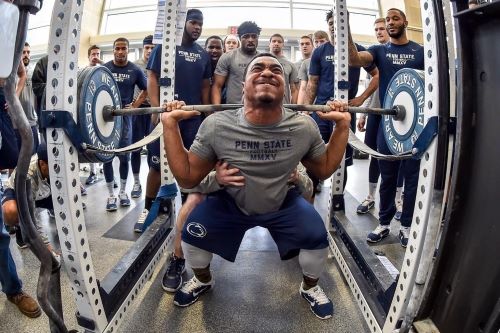
DYNAMIC EFFORT METHOD SETS, REPS, AND REST INTERVALS
Similar to the ME Method, when implementing the DE Method we keep the reps on the lower end of the spectrum. Reps in the 1-5 range are ideal as we want the athlete to stay fresh and perform quality reps as opposed to reps in a fatigued state. In order to train and improve explosiveness, you need to be in a fresh state so it is important to ensure the reps stay on the lower end and you allow for proper rest between sets.
As stated earlier, when performing the DE Method we want to use a lighter load when performing strength exercises and either bodyweight or light load when performing plyometric (jumping) and sprinting exercises.
You can even work through a range of weight by gradually increasing the load from set to set – just make sure that the weight stays low enough so the athlete can still move with power and acceleration.
When determining rest intervals, it will depend on the movement being trained as well as the load being used. The more intense the movement and load, the longer rest you will need as again you want the athlete to be in a somewhat fresh state before performing the next set.
This type of training is generally not as grueling as the ME Method, so you shouldn’t need as much time between sets (sometimes up to 5 mins with the ME Method). Usually 60-90 seconds between sets should do the trick – again adjust the rest as you adjust the intensity.
When it comes to sets, you can go on the higher end because the reps are low. Sets of 5-8 can be used with most training movements, but be sure to take into account the state of the athlete – meaning if they are feeling fresh then feel free to go on the higher end of the spectrum with sets and when the athlete is feeling fatigued or “beat up”, then be sure to stay on the lower end.
DYNAMIC EFFORT METHOD EXERCISE AND MOVEMENT SELECTION
When picking exercises and movements to use for the DE Method, we like to follow Louie’s guidelines and include bench press, squat, and deadlift variations. These are great multi-joint movements that incorporate the whole body and are great at getting athletes more powerful.
However, because we are training athletes that move in a variety of planes and directions, we also want to incorporate a much wider variety. To do this we include plyometric (jumping) and sprinting variations for the lower body and med ball variations for the upper body.
Below is a list of training movements we use:
Lower Body:
- Squats – using roughly 50-60% of our 1 RM
- Deadlifts – using roughly 50-60% of our 1 RM
- Squat Jumps – using bodyweight or a light load
- Split Squats Jumps – using bodyweight or a light load
- DB/KB Swings
- Vertical Jump Variations (unilateral and bilateral)
- Broad Jump Variations (unilateral and bilateral)
- Lateral Jump Variations (unilateral and bilateral)
- Sled Sprints – using a lighter load
Upper Body:
- Barbell or Dumbbell Bench Press – using roughly 50-60% of our 1 RM
- Barbell or Dumbbell Push Press – using roughly 50-60% of our 1 RM
- Med Ball Throwing Variations (both horizontal and vertical)
- Explosive Push-Up Variations
Adding Bands and Chains
Another component we like to include when implementing Dynamic Effort Training is the use of bands and chains.
Bands and chains provide accommodating resistance – meaning they add weight to the bar as you move through your range of motion. This allows you to overload the top portion of the lift where you are normally stronger – so with the squat for example, as you rise up with the bar, the chains or bands add weight. This forces the athlete to be powerful throughout the whole range of motion for that lift.
We can also add light loads with plyometrics (athletes can hold a medicine ball) as well as sprints (attaching a sled to the athlete).
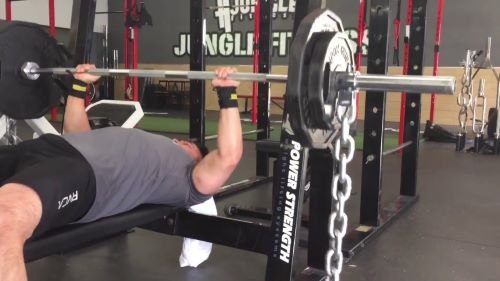
PROGRAMMING DYNAMIC EFFORT INTO YOUR TRAINING
As we discussed above, when we perform DE Method training, we want the athletes to be in a fresh state. Therefore, we generally put it near the beginning of our training session. In order to get the benefits and desired training effect, we want the nervous system to be fresh so we can focus on quality, powerful reps.
Louie Simmons would designate one of his training days as a DE Method day, so they would train it once with the lower body and once with the upper body each week. Again, we are training athletes so we need to modify things just a bit.
While we incorporate the ME Method only once a week (once for upper and once for lower body), because it is very demanding on the body and requires proper rest/recovery – we like to incorporate the Dynamic Effort Method more frequently with our athletes.
We generally incorporate some type of plyometric and/or sprinting variation with our athletes at the beginning of just about every training session. Again, we place these near the beginning of the training session and keep them intense and not too long in duration (20-30 mins).
Our goal with the DE Method is to get our athletes more efficient and powerful moving in a variety of different planes/directions – so we rotate our plyometrics pretty frequently in order to improve and get them comfortable moving in a variety of planes/direction.
We also include DE Method strength training methods in the actual strength training portion of the lift (exercises such as DE Bench, DE Squats, KB Swings, etc.).
Below is an example training session we might use with a football athlete (all DE Method training is in bold):
1A – Sled Harness 10 Yard Sprints 4×1
1B – Bodyweight 10 Yard Sprints 4×2
2A – 1/4 Turn Vertical Box Jumps 4×3
2B – Single Leg Lateral Jumps (for distance) 4×3/side
3A – Barbell Box Squats 5×3
3B – Low Incline DB Row 4×12
3C – Single Arm DB Push Press 4×5
4A – DB Walking Lunge 3×8/leg
4B – Glute Ham Raises 3×12
4C – Side Plank w/ Band Row 3×15/side
4D – X-Band Walks 3×15/direction
SUMMARY
- The Dynamic Effort Method involves an athlete performing a compound movement (either a weight training movement like bench, deadlift, squat or an athletic movement like jumping, sprinting, etc.) with lighter loads (normally 50-60% or even as light as bodyweight for plyometrics and sprints) with the goal of moving as FAST and as POWERFUL as possible
- Lifting in this manner helps the athlete develop their “Usable Strength” or the rate at which they can recruit their strength. With speed being an important factor in sports, it is vital that athletes get more efficient at being able to use or express their strength as quickly as possible
- When performing the DE Method, it is important to keep the repetitions on the lower end (between 1-5) and keep rest intervals as long as needed in order to keep the athlete “fresh” going into their next set
- You can also add bands and/or chains to the barbell with more advanced athletes. This will provide accommodating resistance and force the athlete to be more explosive throughout the whole range of motion.
- Perform your DE Method training earlier (if not first thing) in your training session.
- We like to rotate our training movements somewhat frequently so that our athletes get exposed to a wide variety of movements, thus improving their speed and power in those various movements and directions.
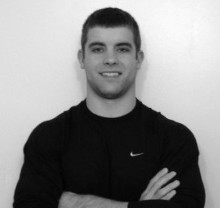
Bobby Fioritto is the founder and president of Elite Sports Performance, a highly sought after athletic performance training facility located in Cleveland, OH.
He received his Master’s degree in Exercise Physiology from Kent State University and is both a Certified Sports Nutritionist (CISSN) and Youth Nutrition Specialist.
Bobby has worked with athletes of all levels – ranging from youth to elite and has had tremendous success across all categories. Visit his website to get more info on what he has to offer for you: www.BobbyFioritto.com.



